Stingrays Common In The Gulf
News Staff • September 30, 2023
Stingrays are common along the Gulf Shores Beaches
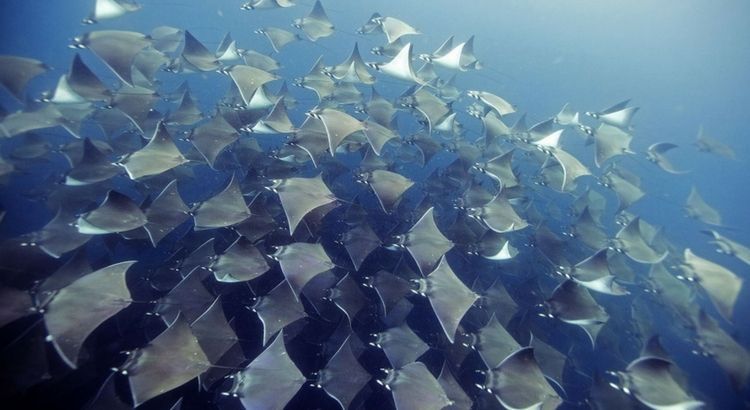
Along the beaches of the Gulf Coast there are many types of rays and skates which frequent our area. Many of them are bottom dwellers and can easily bury themselves in the sand. Their wide, flat bodies, may not look like fish, but they are. They are related to sharks, and like their shark cousins, they do not have bones. Instead, their bodies are supported by cartilage, the same material that you feel inside the tip of your nose. Favorite foods for stingrays includes clams, oysters, shrimps, crabs, and mussels. When they find dinner, stingrays crush their meal using strong jaws.
HERE ARE A FEW OF THE MOST COMMON RAYS IN OUR AREA:
COWNOSE RAY:
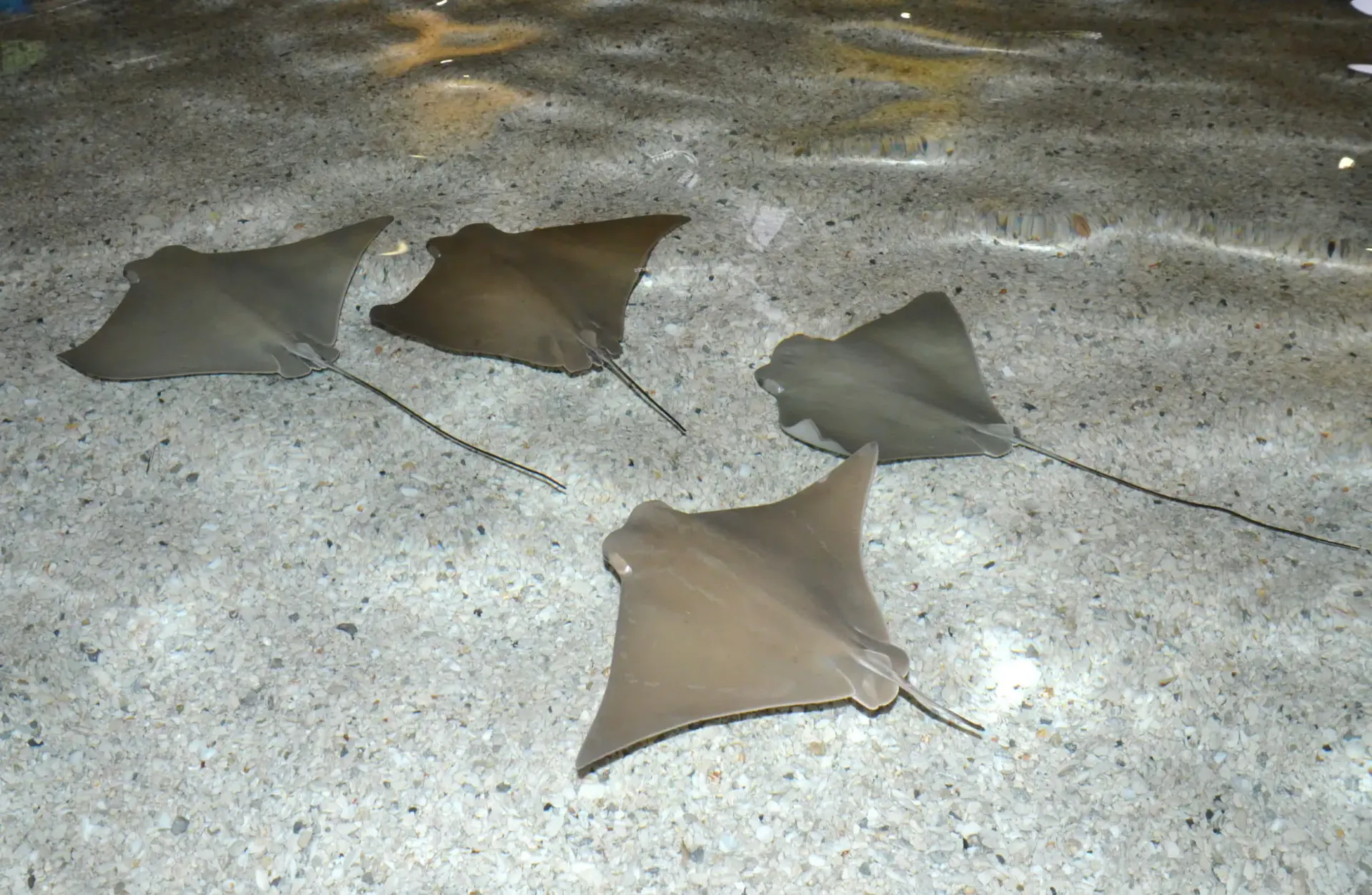
Named for the shape of its head, Cownose rays have a distinct shape with long, pointed pectoral fins or “wings” that are separated into two lobes at the front of their high-domed heads – creating the cow-nose shape. This ray is a foraging predator that specializes on shelled, invertebrate prey including clams, snails, lobsters, oysters and crabs. Once cownose rays detect their prey, they flap their pectoral fins while also sucking up sediment through their mouths and out their gill slits. Eventually they draw the prey into their mouth and use their strong jaws and thick, crushing tooth plates to break open the shells.
Cownose rays have poisonous stingers, however, since they are shy and generally swim at the surface, they pose a minimal risk to humans stepping on their spine.
SOUTHERN STINGRAY
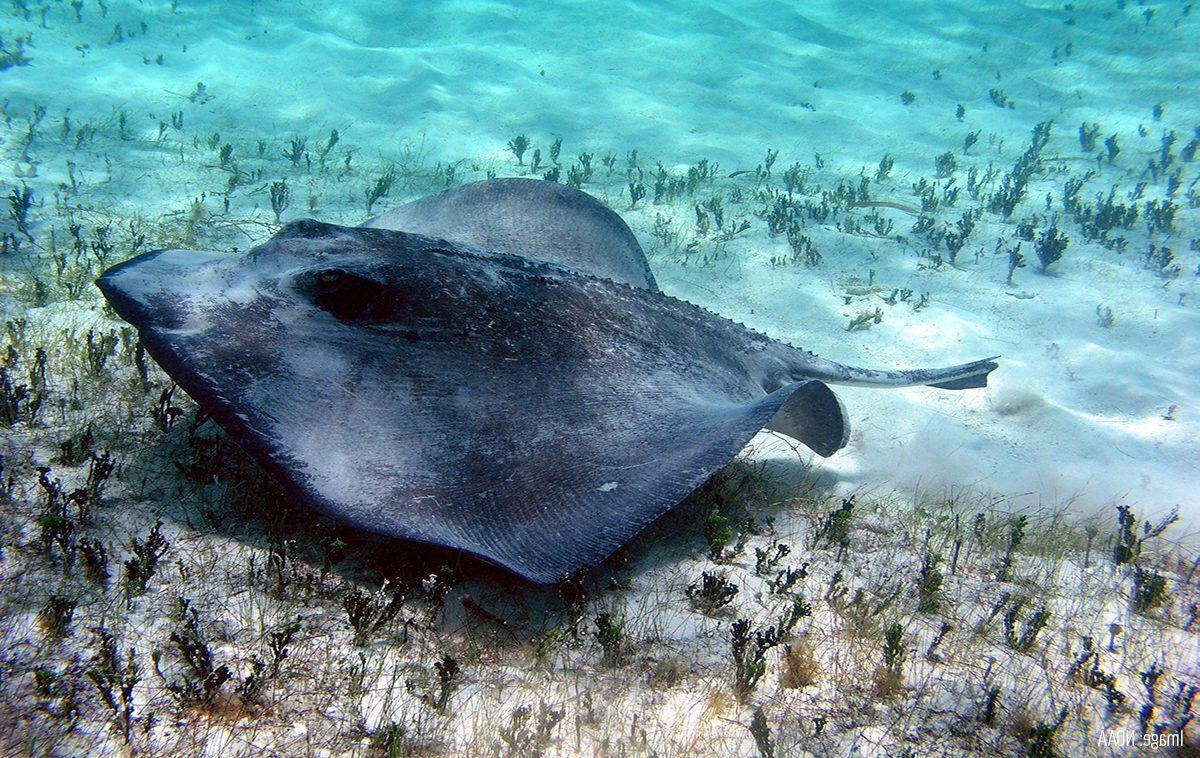
The southern stingray feels most at home in warm, shallow waters, making the Gulf of Mexico ideal. To help them stay hidden in the sand, this species has diamond-shaped disks in white on their belly and gray, black or dark brown diamond-shaped disks on their back. You can also identify these rays by their long, whip-like barbed tails.
Southern Stingrays have a maximum weight of around 210 pounds, which they grow to by eating worms, bivalves, crustaceans and small fish. Because their prey is usually buried in the sand, southern stingrays force streams of water out their mouths and flap their fins over the sand to encourage them to come out.
MANTA RAY
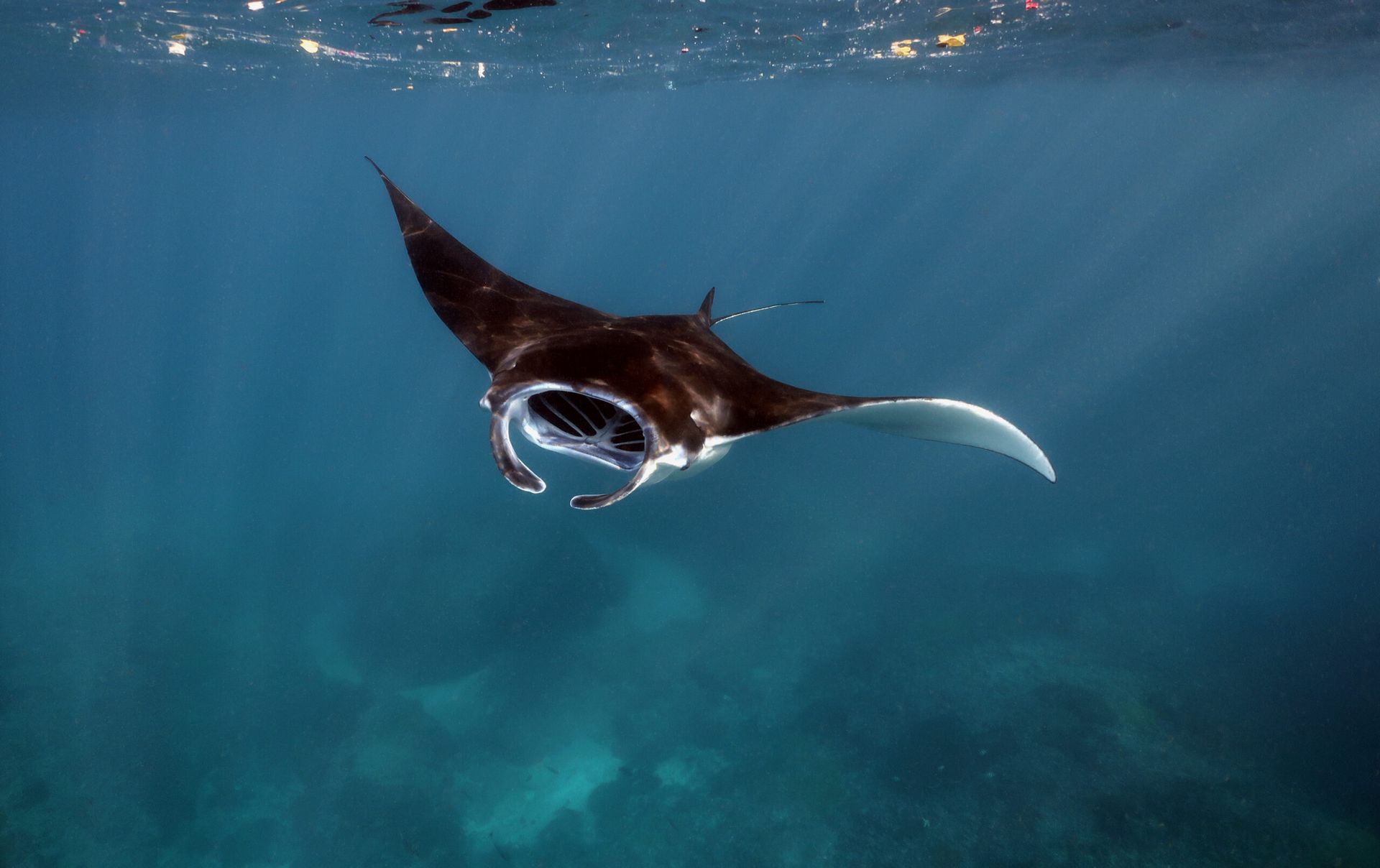
Typically seen by local off-shore fishermen and women, the Manta Ray is consider one of the most beautiful rays and have been known to leap several feet when jumping out of the water. Manta rays feed on plankton and other small fish which they sweep into their mouths with their fins while swimming. They look intimidating but their tales are not stingers.
An amazing discovery happened in 2021 – scientists have found the very first manta ray nursery in the world in the Gulf of Mexico. Located 70 miles off the coast of Texas, this unique reef is where juvenile manta rays are taken care of for their first 4-5 years until they’re big and strong enough to go off on their own and live their lives as adults.
SPOTTED EAGLE RAY
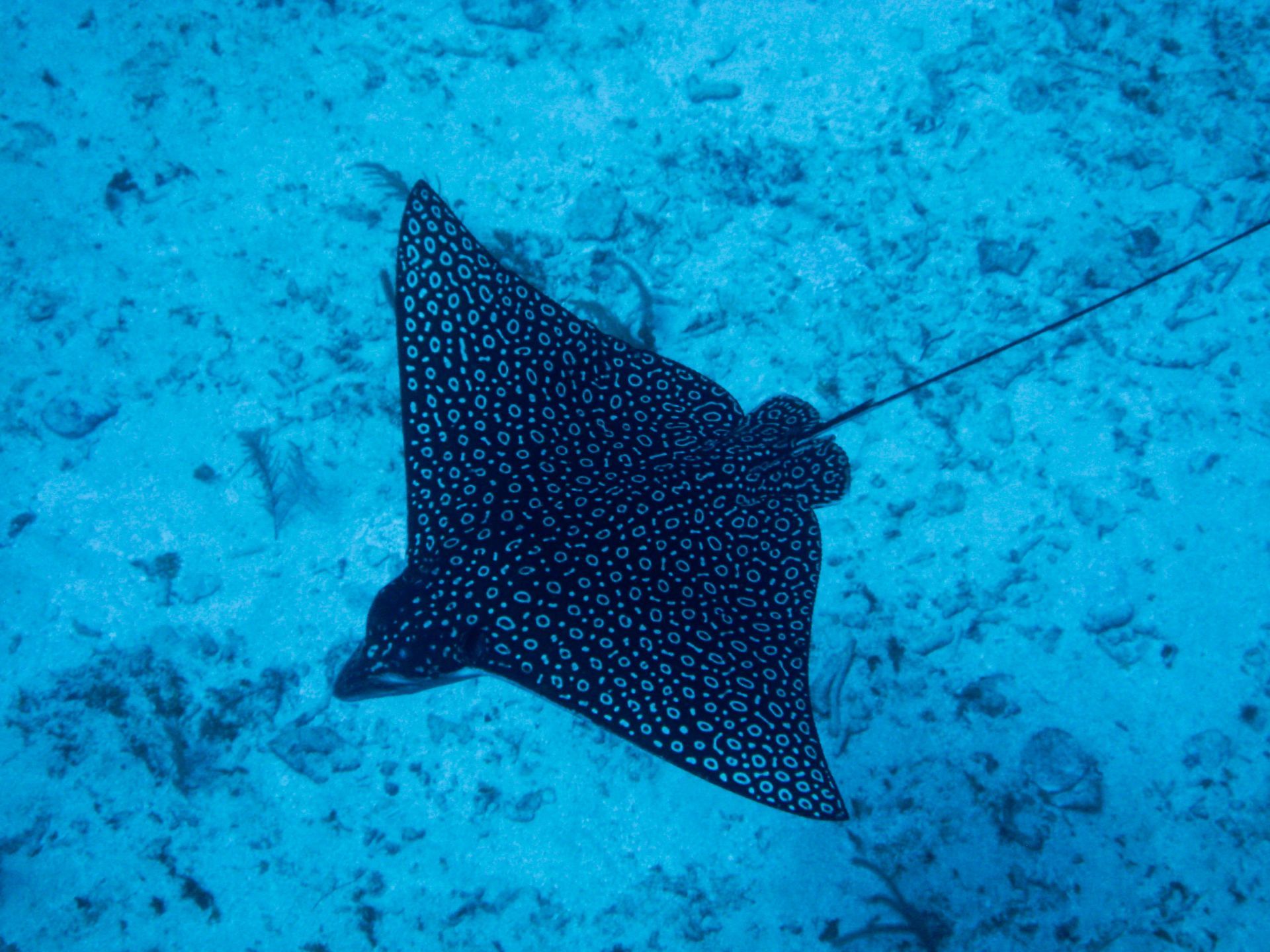
One of the easiest rays to identify, the spotted eagle ray has a dark, flattened body covered in white spots. The pectoral fins of this species are extremely pronounced and wing-shaped which they use for gliding over the ocean’s floor. The head is also very pronounced and features a beak-shaped tapered snout like a bird.
Spotted eagle rays can be huge. They can grow up to 29 feet long (including their tail) and 10 feet wide, with a hefty weight of up to 500 pounds. They maintain this impressive weight by gorging themselves on small fish, whelks, octopus, annelids, crabs, shrimp and bivalves.
FUN STINGRAY FACTS:
- Stingrays are closely related to sharks.
- Stingray’s bodies are formed up of the same type of cartilage in our ears and noses.
- Stingrays don’t use their eyes to find prey.
- Stingrays can live between 15 to 25 years in the wild.
- There are around 200 different stingray species.
- Stingrays use their sensors to sense electrical signals emitted by their prey.
- Stingrays have gill slides and nostrils on the bottom side of their body.
- The male southern rays are typically 30% smaller than the female
- Stingray venom can be fatal to humans.
Recent Posts

























